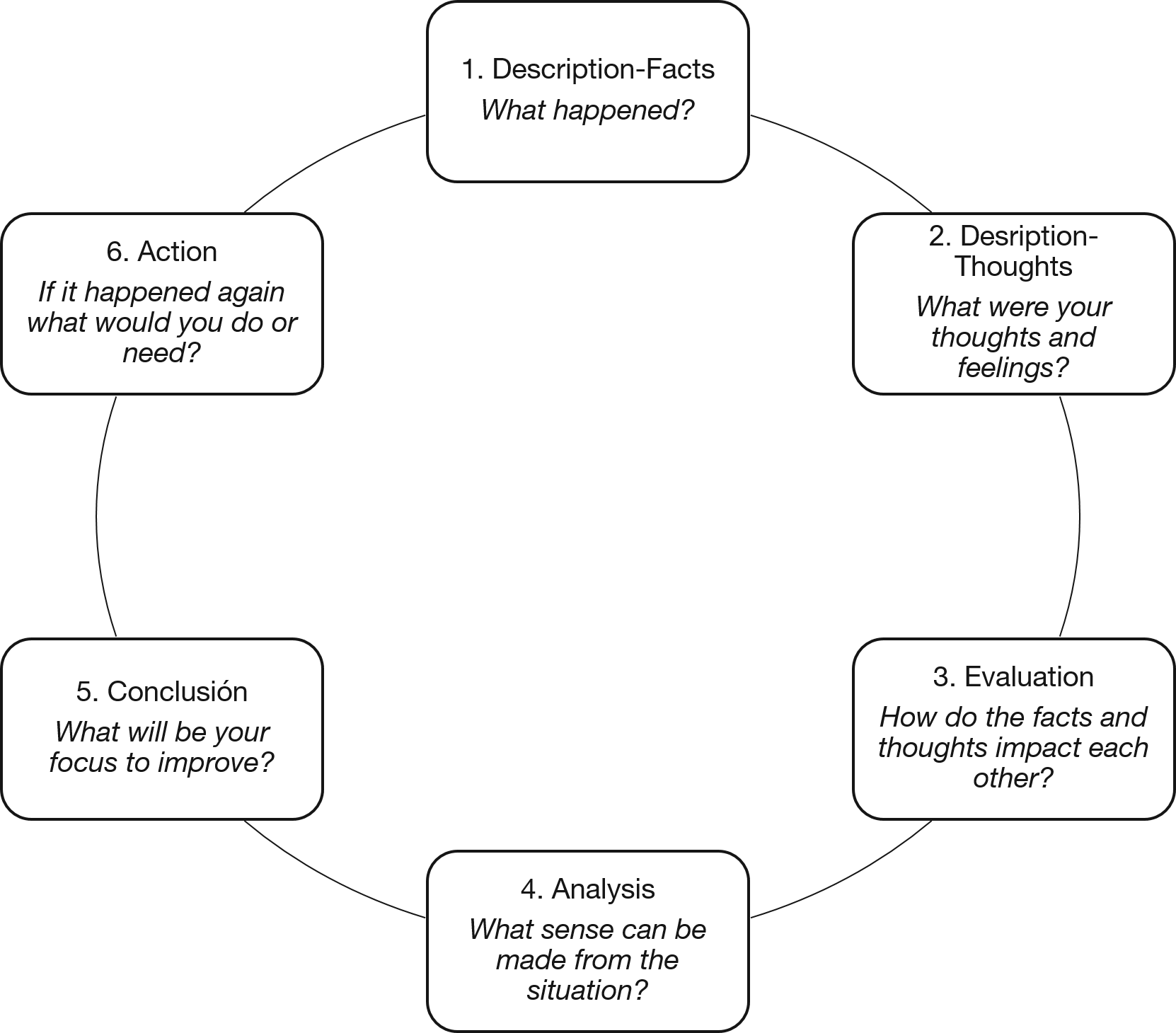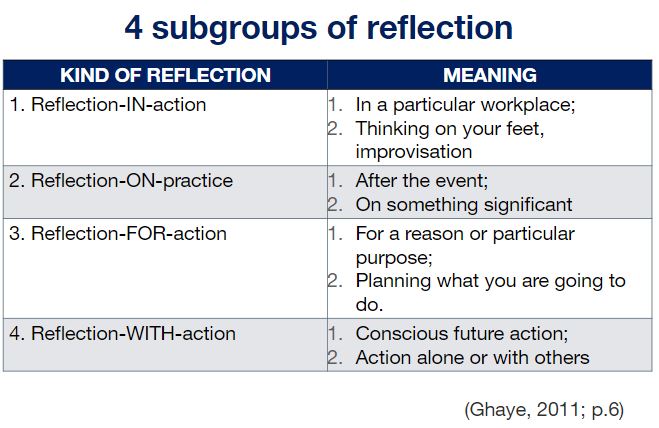Reflection
Habit of critically reflecting on process and results

Reflection is a «persistent, active and careful consideration of any belief or supposed form of knowledge in the light of the grounds that support it and the further conclusions to which it tends» (Dewey, 1993).
In education, different practices of Reflective teaching aims to promote Reflection as «a process where teachers think over their teaching practices, analyze how something was taught and how the practice might be improved or changed for better learning putcomes» (Mathew et al., 2017)
Relaboration of Gibbs’ cycle (1998)
Being able to critically reflect on the process and outcomes
Reflection can be further categorized in 4 subgroups (Ghaye, 2011):
1. Reflection-IN-action:
Thinking about what your are doing while you are doing it in a given context or place (improvisation).
2. Reflection-ON-practice:
Thinking after an event, focusing on what was significant.
3. Reflection-FOR-action:
Planning to improve yourself and your teaching practice.
4. Reflection-WITH-action:
Taking concrete steps to improve yourself and your teaching practice, alone or in group.
1. In Virtual Learning Environments (VLEs), interactions are limited and this may reduce room for improvisation (Reflection-IN-action);
2. Recordings give teachers the opportunity to reflect more in details on the outcomes of their teaching (Reflection-ON-practice);
3. Teachers need to reflect more on the kind of environment they want to establish through the use of different digital/web tools (Reflection-FOR-action);
4. For Reflection-WITH-action, higher technical skills might be needed to deliver new teaching practices;




